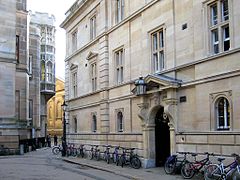
Trinity College is a constituent college of the University of Cambridge. Founded in 1546 by King Henry VIII, Trinity is one of the largest Cambridge colleges, with the largest financial endowment of any college at either Cambridge or Oxford. Trinity has some of the most distinctive architecture in Cambridge with its Great Court said to be the largest enclosed courtyard in Europe. Academically, Trinity performs exceptionally as measured by the Tompkins Table, coming top from 2011 to 2017. Trinity was the top-performing college for the 2020–21 undergraduate exams, obtaining the highest percentage of good honours.

King's Hall was once one of the constituent colleges of Cambridge, founded in 1317, the second after Peterhouse. King's Hall was established by King Edward II to provide chancery clerks for his administration, and was very rich compared to Michaelhouse, which occupied the southern area of what is now Trinity Great Court.

Great Court is the main court of Trinity College, Cambridge, and reputed to be the largest enclosed courtyard in Europe.

Nevile's Court is a court in Trinity College, Cambridge, England, created by a bequest by the college's master, Thomas Nevile.

The Senate House is a 1720s building of the University of Cambridge in England, used formerly for meetings of its senate and now mainly for graduation ceremonies.

The Ascension Parish Burial Ground, formerly known as the burial ground for the parish of St Giles and St Peter's, is a cemetery off Huntingdon Road in Cambridge, England. Many notable University of Cambridge academics are buried there, including three Nobel Prize winners.
The Cambridge University Association Football League (CUAFL) is a football league between the Colleges of Cambridge University organised by the Cambridge University Association Football Club.
A choral scholar is a student either at a university or private school who receives a scholarship in exchange for singing in the school or university's choir. This is a common practice in the UK at schools attached to cathedrals where the choir is the cathedral choir, and at Oxford and Cambridge University Colleges, many of which have famous choirs.

King's Parade is a street in central Cambridge, England. The street continues north as Trinity Street and then St John's Street, and south as Trumpington Street. It is a major tourist area in Cambridge, commanding a central position in the University of Cambridge area of the city. It is also a place frequented by many cyclists and by students travelling between lectures during term-time.

Gonville and Caius College, often referred to simply as Caius, is a constituent college of the University of Cambridge in Cambridge, England. Founded in 1348 by Edmund Gonville, it is the fourth-oldest of the University of Cambridge's 31 colleges and one of the wealthiest. In 1557, it was refounded by alumnus John Caius. The college has been attended by many students who have gone on to significant accomplishment, including fifteen Nobel Prize winners, the second-highest of any Oxbridge college after Trinity College, Cambridge.

Trinity Street is a street in central Cambridge, England. The street continues north as St John's Street, and south as King's Parade and then Trumpington Street.
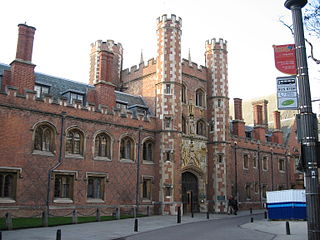
St John's Street is a historical street in central Cambridge, England. The street links with Bridge Street, Round Church Street, and Sidney Street to the north. It continues to the south as Trinity Street, then King's Parade and Trumpington Street. This thoroughfare is the main area for some of the most historic University of Cambridge colleges.

Sidney Street is a major street in central Cambridge, England. It runs between Bridge Street at the junction with Jesus Lane to the northwest and St Andrew's Street at the junction with Hobson Street to the southeast.
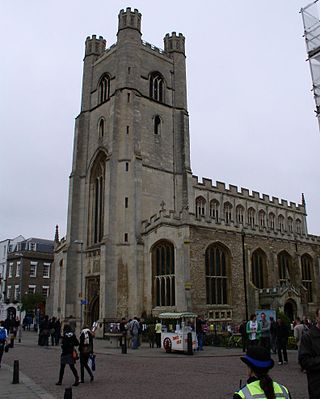
St Mary's Street is a historic street in the centre of the University area in Cambridge, England. The street links with the junction of King's Parade and Trinity Street to the west, along which many of the University's oldest colleges are to be found. To the east is Market Hill, the location of the city's Market Square. The street continues as Market Street.

The Old Schools are part of the University of Cambridge, in the centre of Cambridge, England. The Old Schools house the Cambridge University Offices, which form the main administration for the University.
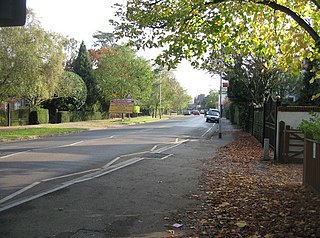
Barton Road is a major arterial road linking central Cambridge, England with Junction 12 of the M11 motorway to the southwest.
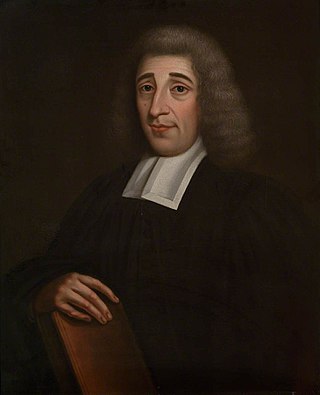
Sir James Burrough was an English academic, antiquary, and amateur architect. He was Master of Gonville and Caius College, Cambridge, and designed or refaced several of the buildings at Cambridge University in a Classical style.
Physwick or FishwickHostel is a former constituent of the University of Cambridge located on the south side of the present Trinity Great Court, between the Queen’s Gate and Trinity Street. It was founded in 1393 when William Fiswick, the first esquire or armiger bedel of the university, bequeathed his Trinity Lane hall to Gonville Hall.

A stained glass window commemorating British statistician, geneticist, and eugenicist R. A. Fisher was installed in the dining hall of Gonville and Caius College in Cambridge, England in 1989. It depicts a 7x7 Latin square, as featured in Fisher's The Design of Experiments. The idea for the window came from college fellow, A. W. F. Edwards, and the execution was the work of Maria McClafferty.
